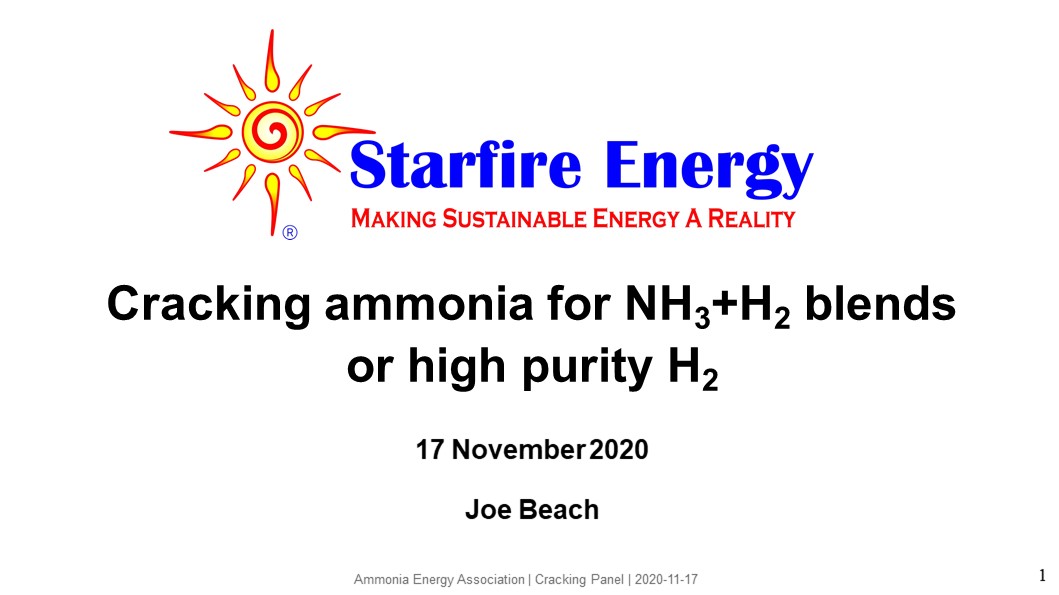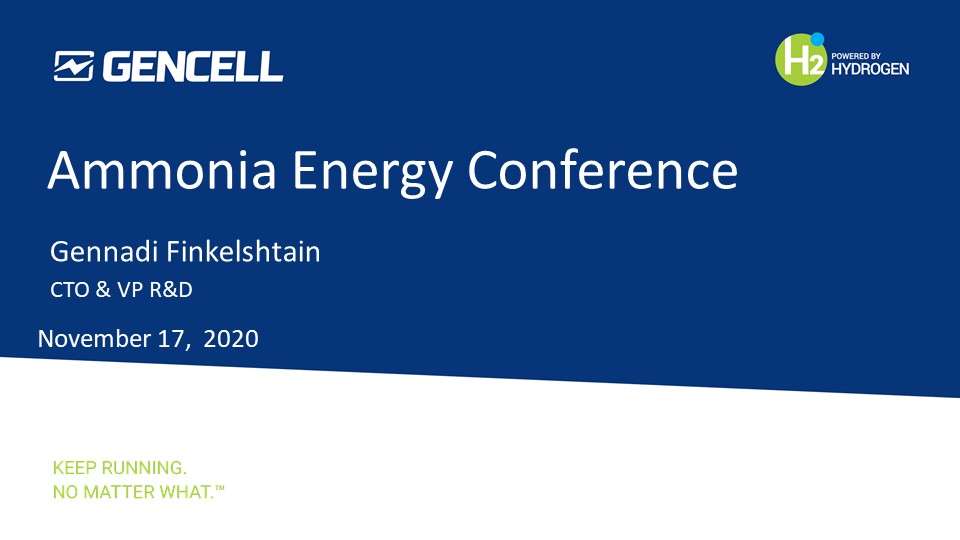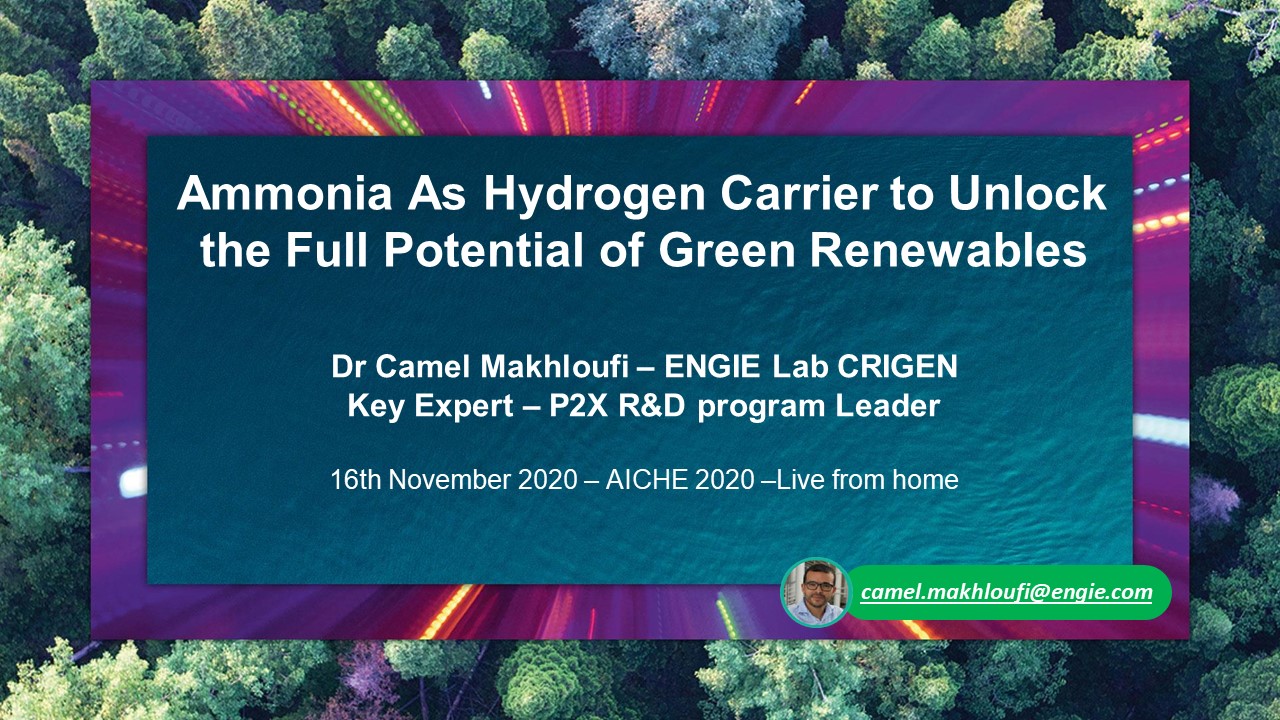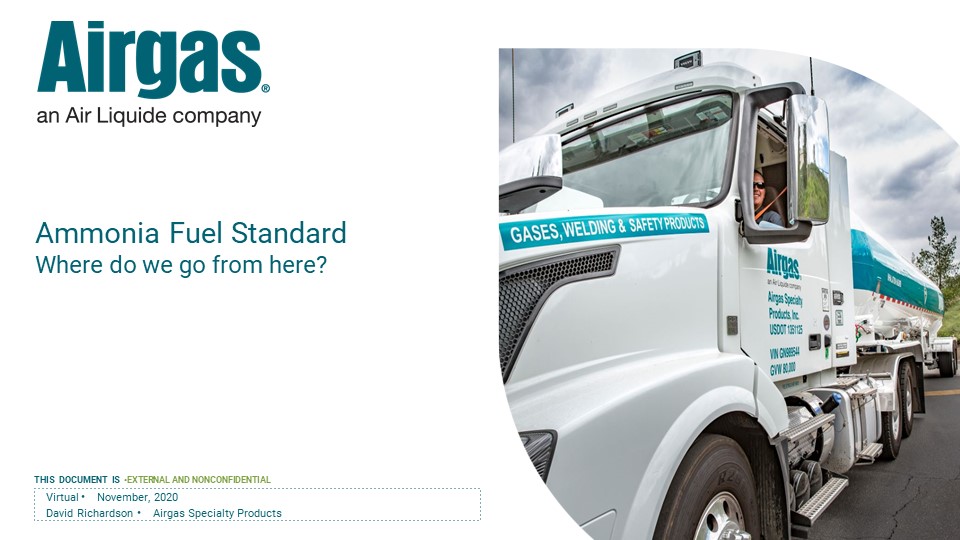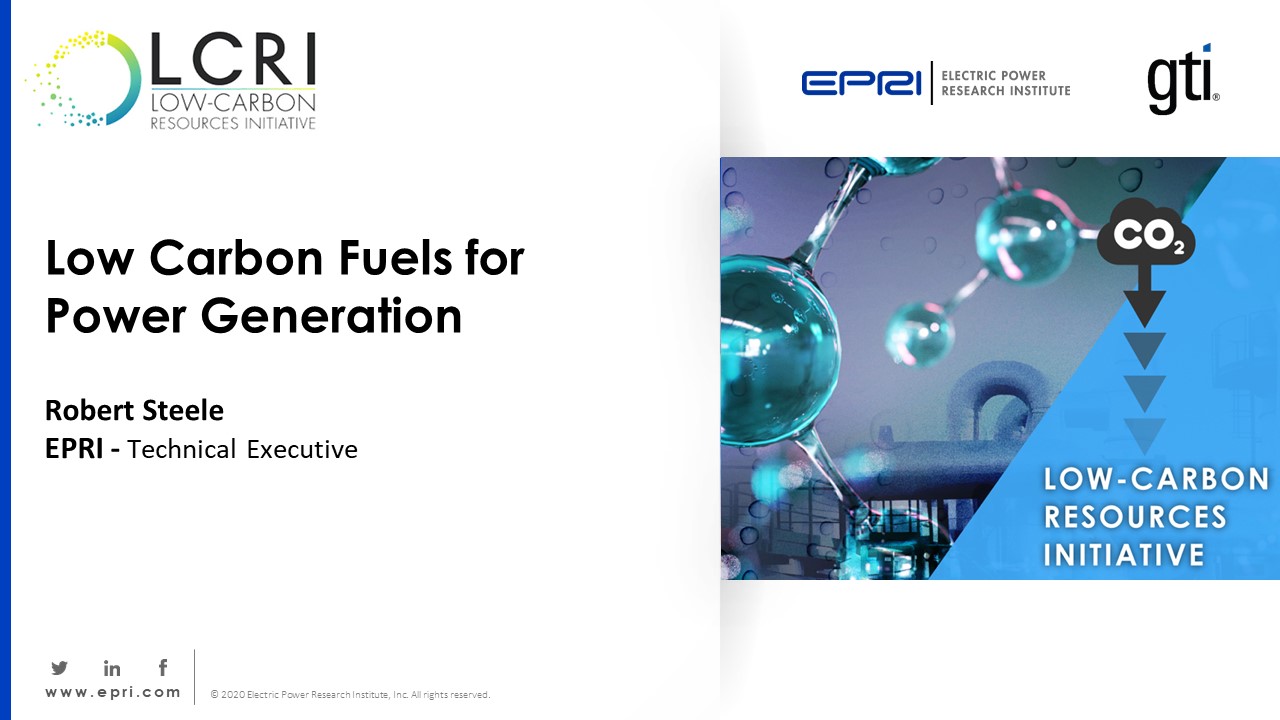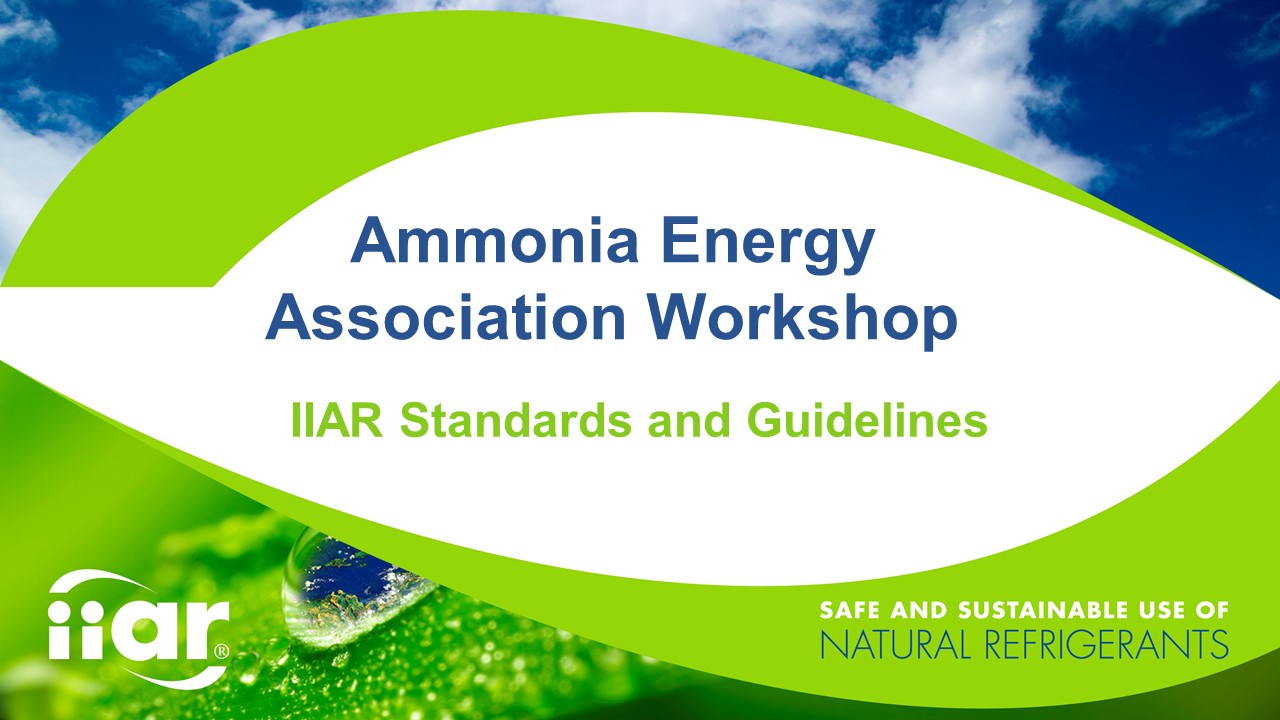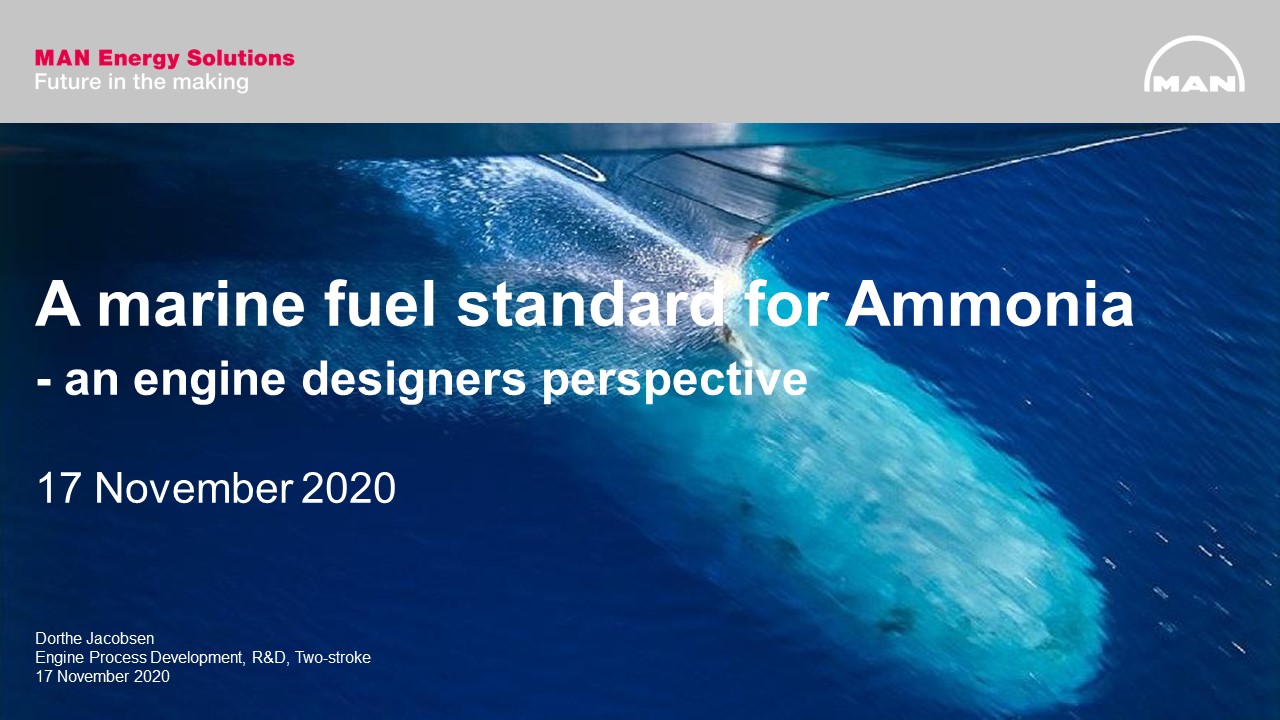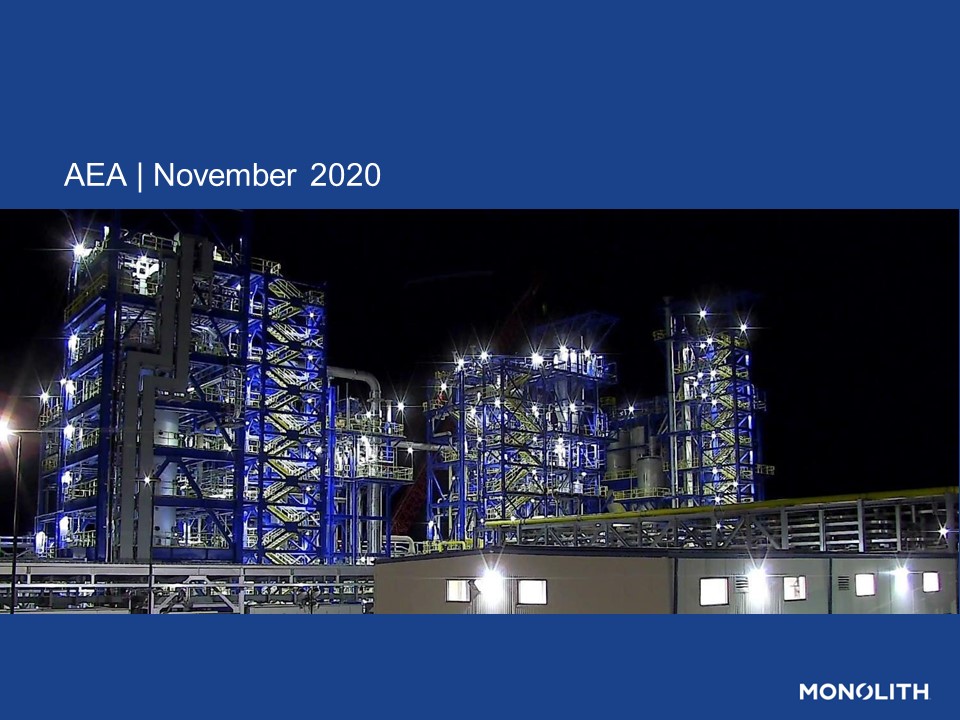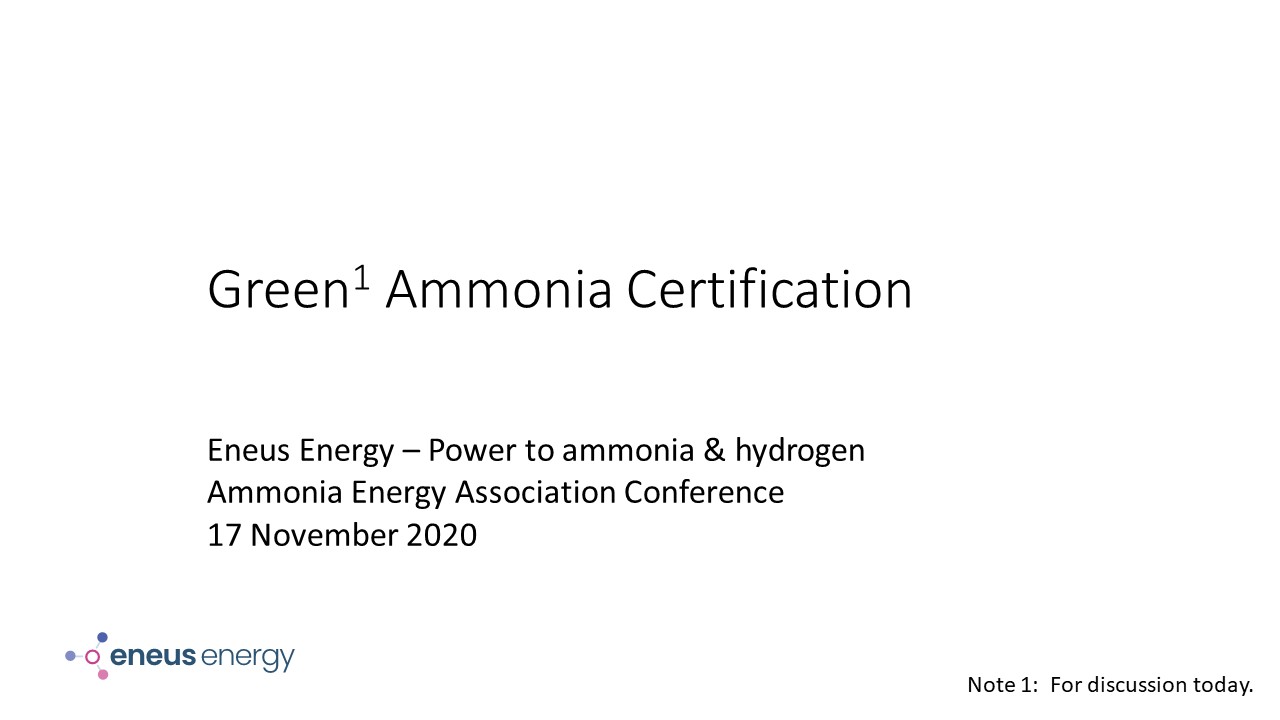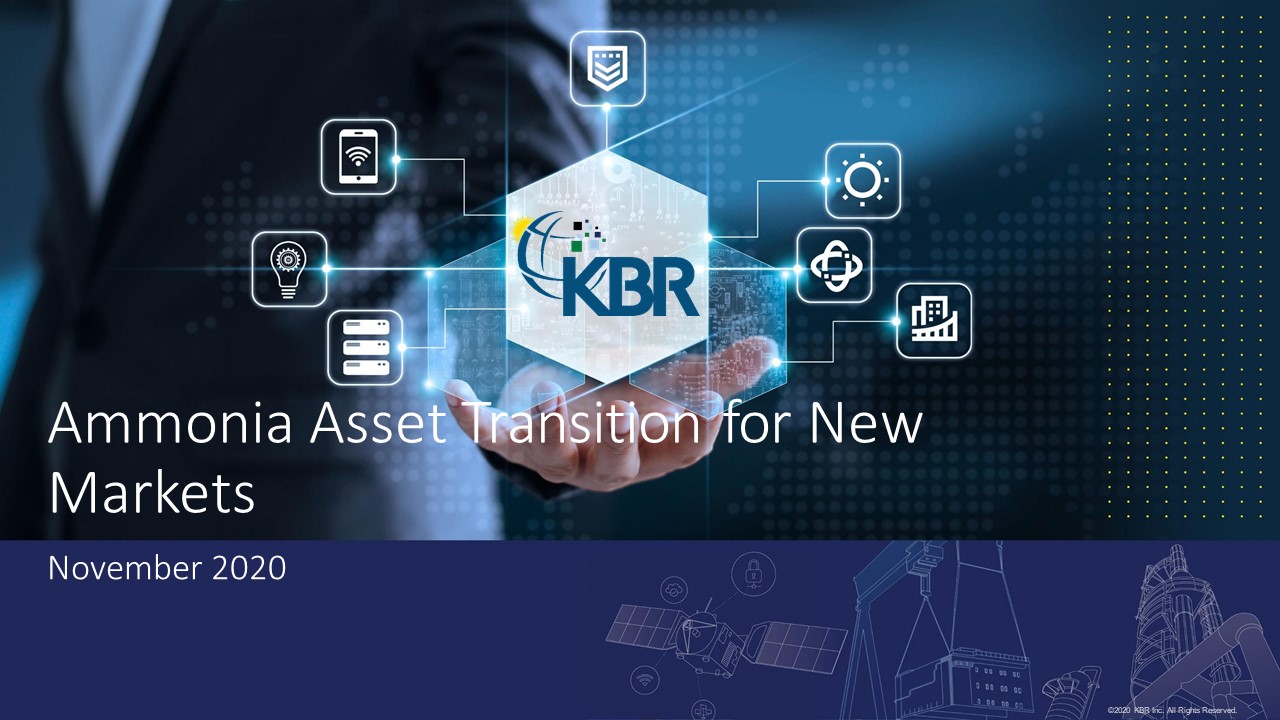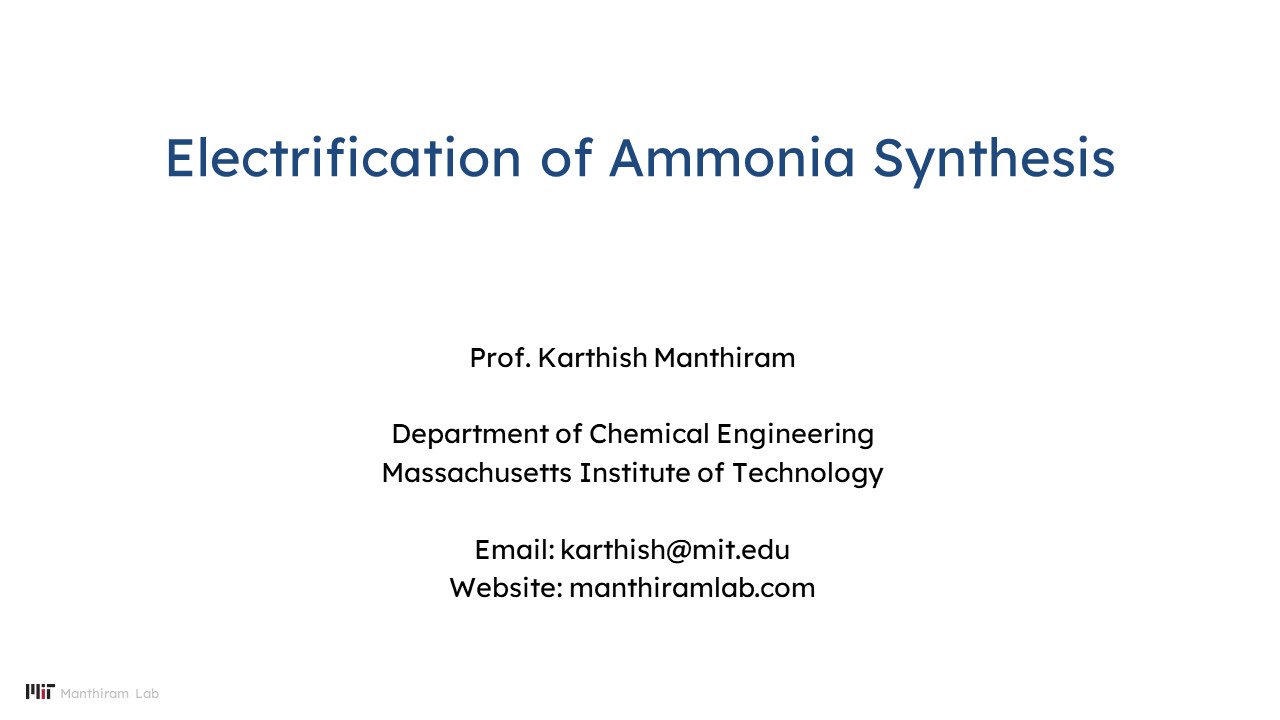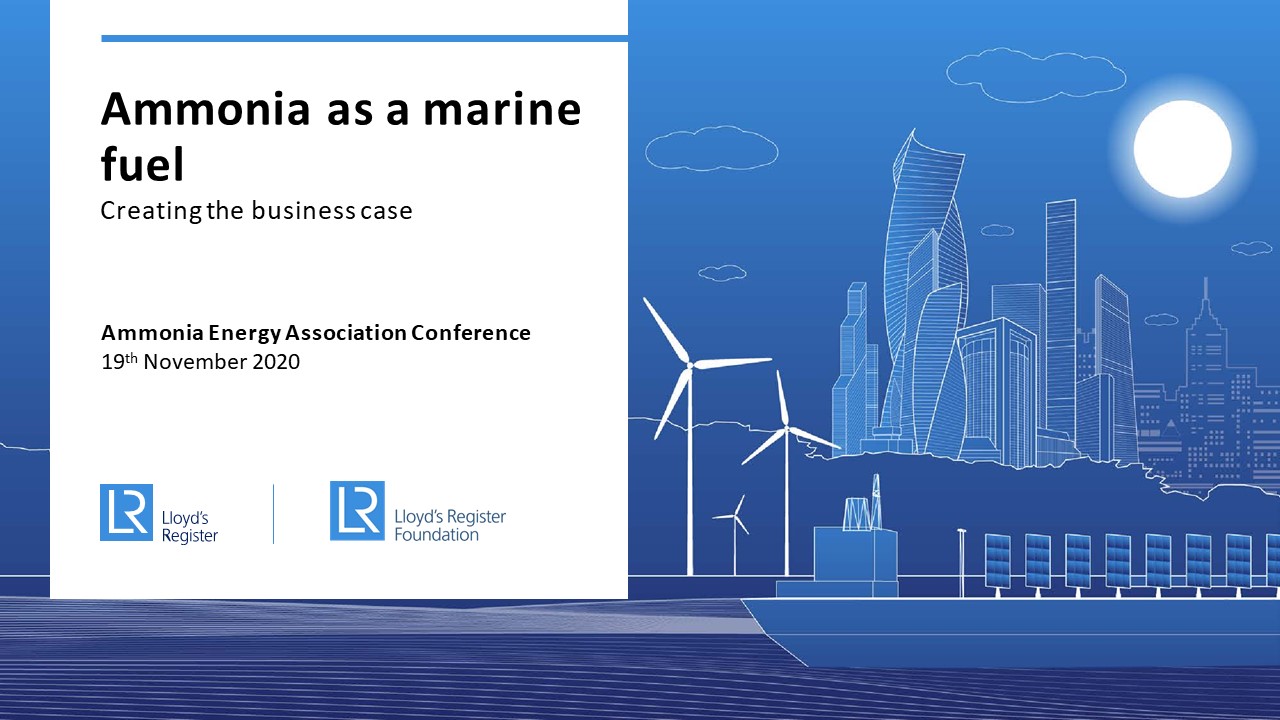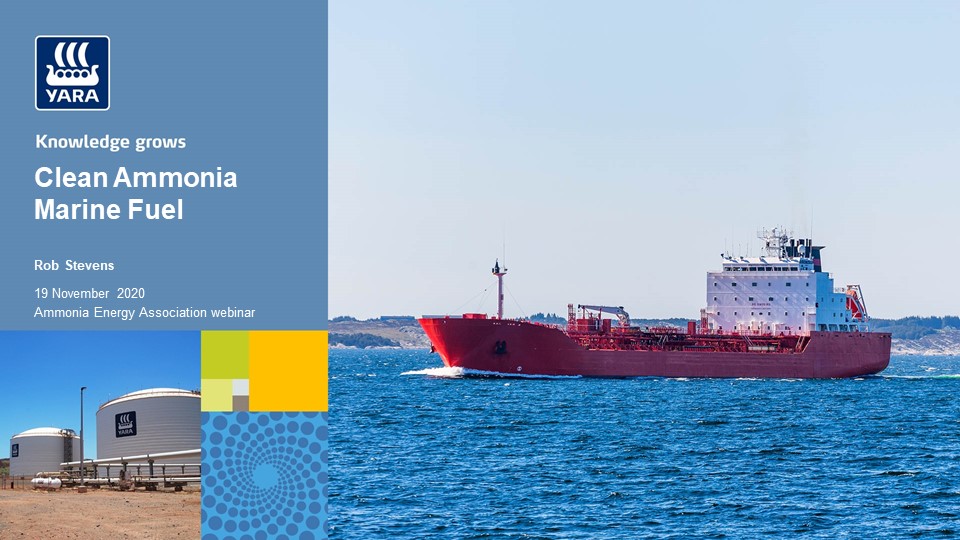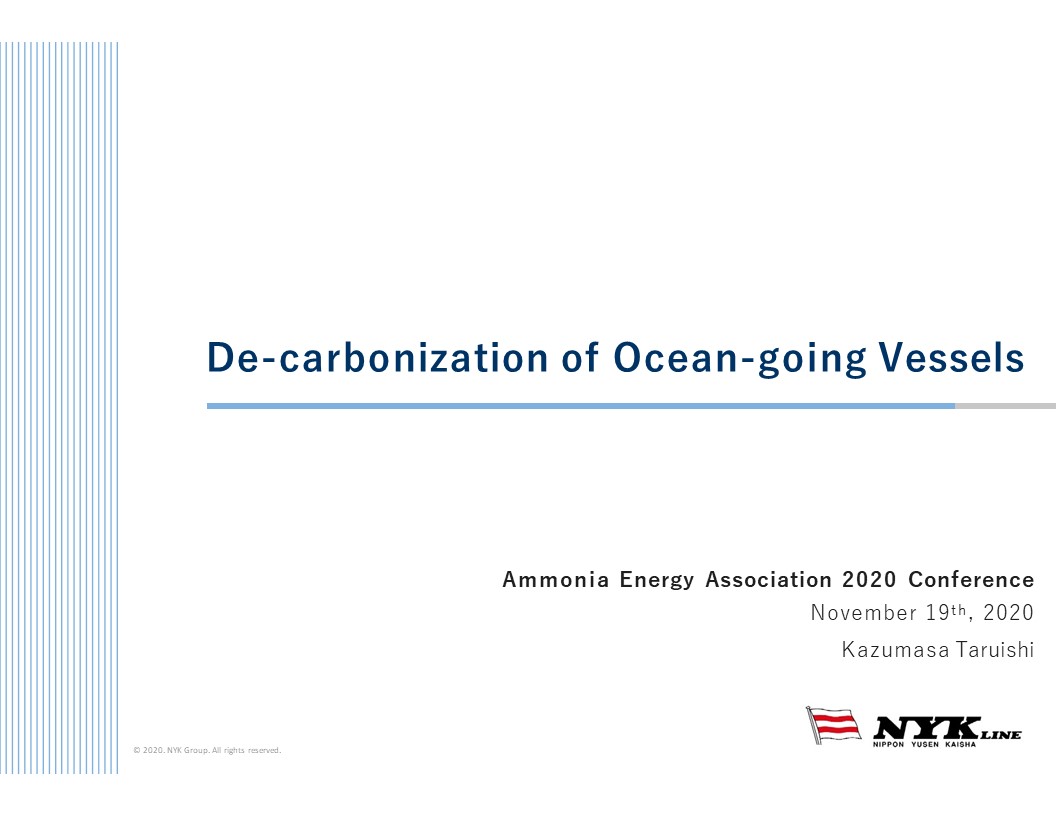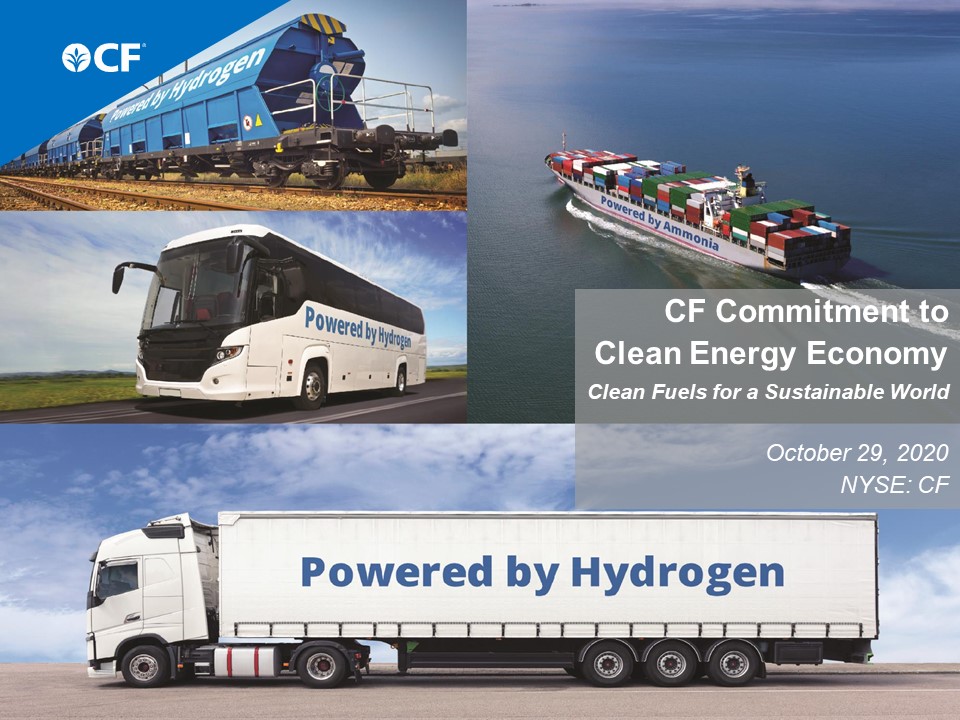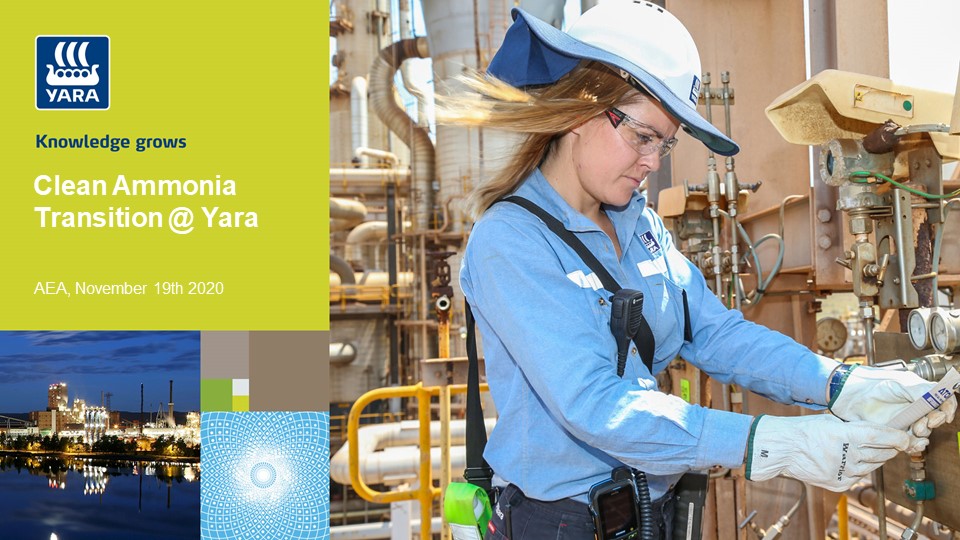Ammonia Energy Conference 2020
November 16, 2020 November 20, 2020
16 – 20 November 2020
Schedule
Keynote
Monday, November 16, 2020 10:00 pm 11:00 pm
Presentation
Green Ammonia at Oil and Gas Scale
Green Ammonia demand will grow massively over the coming years as it takes a central role in decarbonization, particularly in hard to abate sectors. In order to meet this demand, the industry must respond with projects at oil and gas scale. This is the only way to deliver the volumes required to decarbonize and to do it at the prices needed to accelerate the energy transition. The project concept pioneered by Intercontinental Energy offers a way forward. This presentation will outline Intercontinental Energy’s view of the green ammonia market and summarize the project template used throughout the global portfolio, followed by an…
Cracking Ammonia
Tuesday, November 17, 2020 1:00 pm 2:30 pm
Presentation
Ammonia cracking: when, how, and how much?
Cracking ammonia to produce hydrogen underpins many of the fuel-based uses of ammonia, and as such is a lynchpin technology in the case for ammonia energy. While in many ways ammonia cracking is a mature technology, systems which are designed specifically for these applications are less common. In this presentation, a general overview of the potential roles of ammonia cracking in facilitating the use of ammonia for energy applications will be outlined, including a survey of established and emerging cracking and purification technologies. A forthcoming project to produce an AEA Ammonia Cracking Technical Paper will be introduced.
Presentation
Starfire Energy's ammonia cracking and cracked gas purification technology
Ammonia cracking is important for both combustion and fuel cell applications. Starfire Energy has verified that a blend of 70% ammonia + 30% cracked ammonia can burn well in a conventional natural gas burner with very low ammonia slip and acceptable NOx using a stoichiometric fuel-air mixture. A 10 MW turbine or internal combustion engine using such a blend will need about 1.44 tonnes of cracked ammonia per hour. Starfire Energy’s monolith-supported cracking catalyst may be ideally suited for this application. Fully cracked ammonia retains several thousand parts per million of ammonia due to thermodynamic limitations. Residual ammonia can damage…
A Fuel Standard for Ammonia
Tuesday, November 17, 2020 3:30 pm 5:00 pm
Presentation
Ammonia Fuel Standard, where do we go from here?
A discussion focused on the path to creating an ammonia fuel standard. Exploring the current state of the Ammonia Fuel Product Standards, its parallels to the current ammonia industry, and the challenges that need to be overcome to develop a meaningful standard for all stakeholders in the ammonia fuel supply chain.
Presentation
Low-Carbon Fuels for Power Generation
The EPRI-GTI Low Carbon Resources Initiative (LCRI) has nine technical subcommittees. The Power Generation subcommittee currently has 26 active members representing electric, gas and combined electric & gas utilities as well as two gas turbine Original Equipment Manufacturers (OEM). Studies, testing and demonstration projects utilizing hydrogen and ammonia as alternate low-carbon energy carriers dominates member interests with hydrogen being most significant. Next steps will include scoping specific topics for “no-regret” studies and soliciting inputs for creating a five-year power generation roadmap. Current position of the power generation company members: Alternate Energy Carrier (AEC). Applied R&D on H2 and H2…
Presentation
IIAR Standards and Guidelines
The International Institute of Ammonia Refrigeration (IIAR) is a professional society and trade association dedicated to the use of natural refrigerants, the most prevalent of which is ammonia. IIAR members embrace the safe use of ammonia because of its energy efficiency, ease of use, and wide availability. Soon celebrating 50 years as a professional society, IIAR has developed numerous standards and guidelines that are recognized by government agencies, model codes, and associated organizations in the United States and internationally. Our member library contains hundreds of technical papers on a wide array of topics regarding the use of ammonia. This session…
Presentation
A marine fuel standard for Ammonia - an engine designers perspective
The presentation will discuss the challenges for operation on ammonia from an engine designers perspective and show the preliminary fuel standard for ammonia for the MAN Energy Solution ME-LGIA two-stroke engine. The presentation will also discuss drivers for change in the marine industry, and what is required for reaching zero-carbon shipping. A recent MAN-ES technical paper on use of ammonia in two-stroke maritime engines is available here.
Certification of Low-Carbon Ammonia
Tuesday, November 17, 2020 7:45 pm 9:15 pm
Presentation
Low Carbon Ammonia at Nutrien
Nutrien is currently a world leader in the production of low carbon Ammonia today. A market premium for low carbon ammonia is critical to spur investment and deployment of transformative technologies, which will not only provide low carbon Ammonia as a fuel, but support decarbonization of the fertilizer industry as well. The development of a forward-looking certification process, based on sound science, is critical to developing this market.
Presentation
Building a sustainable industrial and energy infrastructure
Adjacent to its steel manufacturing plant in Duisburg, Germany thyssenkrupp has established multi-million dollar testing facility for different kinds of Carbon-2-Chem solutions using the offgases from blast furnaces and coke plants, cleaning and separating those gases into its different components and further processing the components to different chemical products such as ammonia and methanol. Major contributor is also the element hydrogen, which is produced in electrolysis unit based on thyssenkrupp’s Uhde technology. This testing facility focuses mainly on recycling the offgases to maximum extent resulting in most sustainable production processes.
Presentation
Low Carbon Ammonia via Methane Pyrolysis
Splitting methane into hydrogen and carbon (methane pyrolysis) allows for the utilization of one of the largest energy reserves on our planet (natural gas) without emitting carbon dioxide, since only the hydrogen is oxidized to release energy, while the carbon is permanently sequesters as a solid product often replacing products that have their own GHG emissions. If you split biogenic methane (that produced from the anaerobic digestion of biomass), carbon dioxide is pulled out of the atmosphere resulting in a carbon negative process for making hydrogen (and in turn ammonia), and presenting a long term opportunity to begin drawing CO2…
Ammonia Infrastructure
Wednesday, November 18, 2020 1:00 pm 2:30 pm
Presentation
Ammonia Asset Transition for New Markets
With over $900 billion worth of assets at risk of being stranded by the energy transition, operators must act now in order to compete in the future. Ammonia, as an already widely traded commodity, may prove to be the vehicle to deliver decarbonised gas resources ahead of a completed transition. Reimagining how we deliver energy is essential to people, planet and economy. Blue ammonia offers a step to realise national gas monetization objectives with the utopia of green ammonia. This presentation with showcase the challenges and opportunities that await and how well we are prepared.
Presentation
Distribution of Ammonia as an Energy Carrier
Ammonia can be used as an energy carrier to produce a low carbon fuel that can be transported around the globe. Infrastructure for transporting ammonia is already in place, but as more ammonia is used as an energy source, addition transportation capacity will be required. This presentation will discuss technical and economic data for ammonia distribution. The focus will be on pipeline and ocean transport. A perspective will be provided to identify the typical required infrastructure to produce, store and distribute of the ammonia for the equivalent power plant energy requirement.
Presentation
A review of global ammonia supply
The presentation will provide an overview of global ammonia supply. It will consider the geography and orientation of the current stock of supply, including captive use, merchant availability and proximity to seaborne markets. It will examine the extent to which there is currently spare ammonia capacity, and the responsiveness of supply to demand growth in different timeframes.
Presentation
Ammonia as Alternative Maritime fuel
Global shipping will by 2050 need to reduce the GHG emissions by 50% compared to the 2008 baseline, according to one of the targets set by the IMO, as well as a goal of being GHG neutral by the end of the century. The adoption of carbon neutral fuels will be a key enabler to achieve this goal. This presentation will consider these issues and suggest a process and pathway to overcome regulatory barriers, safety, and infrastructure for ammonia that needs to be addressed to facilitate the use of ammonia as a fuel in shipping.
Next-generation Ammonia Synthesis
Wednesday, November 18, 2020 10:00 pm 11:30 pm
Presentation
Whither Aqueous Electro-reduction of Nitrogen to Ammonia?
Electrochemical reduction of N 2 (NRR) is widely recognised as an alternative to the traditional Haber-Bosch production process for ammonia. The high-energy efficiency, low-cost variant of this process involves an aqueous electrolyte and there is now a substantial literature on this topic. However, though the challenges of NRR experiments have become better understood, the reported rates in these aqueous solution studies are often too low to be convincing that reduction of the highly unreactive N 2 molecule has actually been achieved. Unfortunately, there are many possible impurity sources that can interfere with robust measurements. In this presentation we will discuss…
Presentation
Electrification of Ammonia Synthesis
Near-term prospects for decarbonized ammonia synthesis rely on conventional thermochemical Haber Bosch coupled to either electrochemical hydrogen production or methods of mitigating carbon emissions, such as carbon capture and storage. Thermochemical Haber Bosch requires high temperatures to achieve significant rates of ammonia synthesis and high pressures in order to achieve reasonable conversions of nitrogen and hydrogen to ammonia. Next-generation electrically-driven routes raise the prospect of using voltage in the place of temperature and pressure – an ambient pressure and room temperature route through which renewable electricity can be used to convert nitrogen and hydrogen to ammonia. Electrically-driven routes for nitrogen…
Presentation
Alternatives to Ammonia Synthesis: An Electrochemical Haber-Bosch Process
Several alternatives to the existing process for ammonia synthesis, the Haber-Bosch Process, have been proposed in the past two decades, including the electrochemical synthesis in aqueous, molten salt or solid electrolyte cells. The present work reviews results of recent efforts (last 3 years) for the electrochemical synthesis of ammonia. An Electrochemical Haber-Bosch Process is also demonstrated. The proposed BaZrO3 – based protonic ceramic membrane reactor combines hydrogen production via the reactions of methane steam reforming and water-gas shift at the anode (Ni-composite) with ammonia synthesis from N 2 and protons (H + ) at the cathode (VN-Fe). Hydrogen extraction from…
Maritime Ammonia
Thursday, November 19, 2020 1:00 pm 2:30 pm
Presentation
Ammonia as a fuel – building the business case
The successful substitution of current fossil-based fuels by zero-carbon energy sources is dependent on a combination of policy / regulation, investment and commercial business model development and fuel / technology development that will evolve over the coming years. The evolution of both the energy system and the shipping system that is needed, and associated timescales of development, investment and asset life, means that there are steps that need to be initiated now, and work carried out throughout this decade, even though the transition may not be completed for a couple of decades. This presentation looks at the Technology readiness, investment…
Presentation
Ammonia Energy Scale-up challenge
Yara was founded in 1905 to solve famine in Europe, through the production of mineral fertiliser from renewable energy. Today’s challenges have not changed and Yara’s mission is to responsibly feed the world and protect the planet. Producing renewable ammonia has been done before, and the transitional cost and CO2 gap can be closed in public-private partnership. Yara recognizes that collaboration and innovation along the value chain is essential to move into the future, reducing emissions in agriculture (digital farming, circular economy and nitrate-based products). Being one of the largest ammonia producers and the truly global leader in ammonia supply…
Presentation
De-carbonization of Ocean-going Vessels
Most of world trade is supported by ships. In fact, nearly 200 times cargos are carried by ships than air. And, about 800 million tons of CO2 are emitted in the world ocean by whole shipping industry every year. NYK Group as one of the world’s leading marine transportation company is committed to our efforts for GHG emission reduction. We are operating over 700 ocean-going vessels.
The Ammonia Transition
Thursday, November 19, 2020 7:45 pm 9:15 pm
Presentation
CF’s Commitment to Clean Energy Economy - Clean Fuels for a Sustainable World
Hydrogen has emerged as a leading clean energy source to help the world achieve net-zero carbon emissions by 2050. Ammonia is one of the most efficient ways to transport and store hydrogen and is also a fuel in its own right. CF is the world’s largest producer of ammonia and is uniquely positioned, with an unparalleled asset base and technical knowledge, to serve this anticipated demand. We are announcing our commitment to decarbonize the world’s largest ammonia production network, positioning CF at forefront of clean hydrogen supply. We have also announced a new green ammonia project at our Donaldsonville Nitrogen…
Presentation
The Clean Ammonia Transition @ Yara
Yara is one of the world’s largest ammonia producers, and the largest trader and shipper of ammonia around the world. We see green ammonia as key molecule to decarbonize the food chains, as well as the ultimate zero-carbon shipping fuel. To provide proof of concept, different large commercial demonstration projects are in the pipeline. The green projects are based on hydro, off-shore wind and solar, while solutions for blue and grey ammonia can be suitable during the transition period. Several framework conditions for success will be discussed.
Presentation
Start of the Journey - A Carbon Capture Success Story
Carbon Capture, Utilization and Storage (CCUS) has proven to be an important and effective step in helping organizations achieve their global climate change goals. This presentation will provide an overview of a strategic success story, highlighting the importance of partnering with key stakeholders, taking a concept and turning it into an operational reality.




